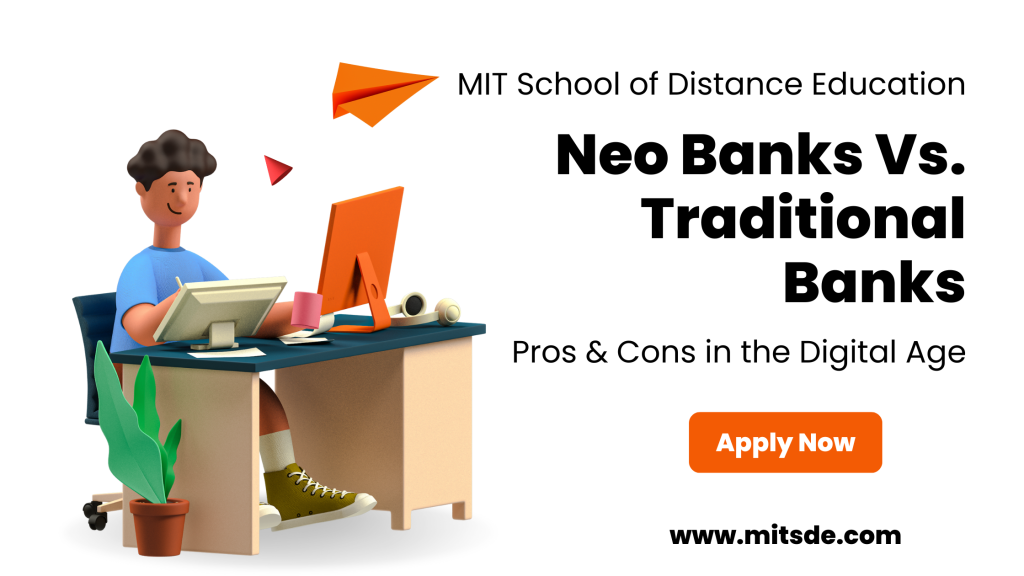
The way we manage our money is undergoing a revolution. Gone are the days of solely relying on traditional brick-and-mortar banks.
Today, a new breed of financial institutions is emerging – Neobanks – offering a completely digital approach to banking and finance. But with this new option comes a wave of questions: are neobanks better than traditional banks?
Which one is right for you?
Traditional banks, with their physical branches and long history, have been the go-to for generations. They offer a wide range of financial products and services, from checking and
savings accounts to loans, mortgages, and investment options. However, traditional banks can
sometimes be slow-moving, with complex processes and potentially hefty fees.
Neobanks, on the other hand, are entirely online. They operate through user-friendly apps, offering a streamlined and tech-savvy experience. Neobanks typically focus on core banking services like money management, budgeting tools, and peer-to-peer payments. They often boast lower fees, faster bank account opening processes, and innovative features that cater to the digital generation.
Neobanks: The Tech-Savvy Choice
Here’s why neo banks might be a good fit for you:
- Convenience: Manage your finances anytime, anywhere from your smartphone. No
more waiting in lines or scheduling appointments. - Lower Fees: Neobanks typically offer free or low-cost monthly fees and transparent
pricing structures. - Tech-Forward Features: Budgeting tools, spending insights, and real-time transaction
notifications are often standard with neobanks. - Speed and Efficiency: Account opening and loan applications can be completed quickly
and easily through the app.
Neobanks: A Few Considerations
While neo-banks offer a host of advantages, there are a few things to keep in mind:
- Limited Services: Neobanks typically don’t offer the full suite of services as traditional banks do, such as safety deposit boxes, cashier’s checks, or in-person notary services.
- Depositing Cash: Cash deposits can be a challenge with neo-banks, as they usually don’t
have physical branches. - Security Concerns: As a relatively new concept, some people might feel less secure trusting their money with a fully digital institution.
Traditional Banks: The Established Choice
Traditional banks have their own set of advantages:
- Wide Range of Services: From checking and savings accounts to loans, mortgages, and
investment options, traditional banks offer a one-stop shop for all your financial needs. - Physical Branches: Traditional banks offer the comfort and security of in-person
interaction with a banker or customer service representative. - Security and Trust: Traditional banks have a long history and are often heavily
regulated, which can provide peace of mind for many customers.
So, Which One Should You Choose?
The best choice for you depends on your individual needs and preferences. Consider the
following:
1. Tech Savvy: If you’re comfortable managing your finances entirely online and prioritize convenience and lower fees, then a neobank might be a good fit.
2. Financial Needs: If you require a wider range of financial services, such as loans, mortgages, or wealth management, a traditional bank might be a better option.
3. Security: If the security and trust of a long-established institution are important to you, a traditional bank might be the way to go.
Deepen Your Understanding with a PG Diploma in Banking & Financial Services
Whether you choose a Neo bank or a traditional bank, understanding the nuances of the banking and financial services industry can be incredibly beneficial. Here’s where a PG Diploma in Banking & Financial Services comes in.
MIT SDE’s PG diploma course in financial services is designed for individuals seeking to advance their careers in the banking sector. The program is offered through an online learning platform, making it accessible to working professionals and students alike.
As one of the best PGDM in financial services, it covers essential areas such as risk management, financial planning, and investment strategies.
Top-distance PGDM finance programs ensure students gain practical knowledge and skills directly applicable to the industry. Such distance certificate courses offer flexibility, allowing
students to learn at their own pace while balancing other commitments.



